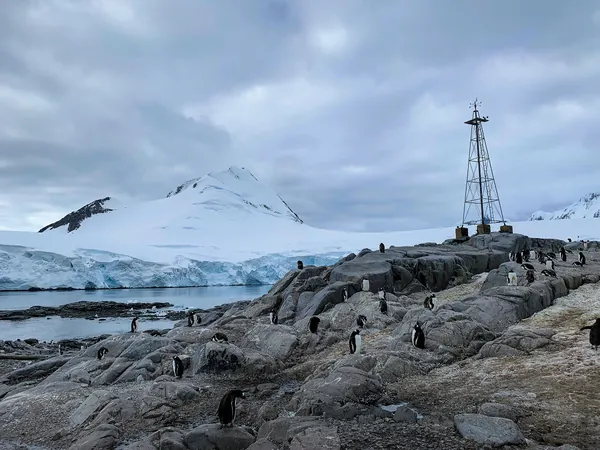
How Penguin Poop is Transforming Antarctica's Clouds
2025-05-23
Author: Ming
In a stunning discovery, scientists have revealed that the humble penguin—specifically, their poop—plays a critical role in cloud formation over Antarctica. This revelation might just change how we understand climate processes in this icy haven.
Researchers found that the ammonia released from penguin guano reacts with sulfur compounds in the atmosphere, leading to the formation of aerosols. These aerosols serve as platforms for water vapor to condense on, ultimately creating clouds. Such clouds act like an insulating blanket, potentially staving off temperature rises and slowing ocean ice loss in the region.
The study, conducted near Marambio Base, showed that ammonia levels surged dramatically—over 1,000 times baseline levels—when winds blew in from a massive colony of Adélie penguins just 8 km away. Even after the penguins departed, the ammonia lingered, demonstrating the lasting impact of their waste.
Study coauthor Matthew Boyer from the University of Helsinki outlines the intricate relationship: oceanic microbial activity produces dimethyl sulfide gas, which, when oxidized in the atmosphere, transforms into sulfuric acid. This chemical interaction, fueled by ammonia, enhances aerosol formation, which in turn has significant ramifications for cloud dynamics.
However, Boyer urges caution regarding interpreting these findings in the broader context of climate change. While it's clear penguins influence cloud formation, determining the exact climatic consequences remains complex. Ice-covered surfaces in Antarctica, for example, can reflect sunlight even more effectively than clouds, raising the possibility that clouds formed over these icy expanses could contribute to warming rather than cooling.
Adding weight to this research, multidisciplinary expert Arshad Arjunan Nair from the University at Albany notes that although modeling has pointed to these dynamics in the past, this is the first concrete evidence linking penguin waste as a significant ammonia source in coastal Antarctica.
The findings underscore a fascinating twist in the narrative around climate change: while penguins are often viewed as victims of a warming world, they may also play a pivotal role in affecting their climate. Looking ahead, Boyer intends to delve deeper into the connection between aerosol cloud processes and their potential radiative impacts, aiming to quantify whether they're contributing to cooling or warming the planet.
This groundbreaking research not only highlights the interconnectedness of ecosystems but also emphasizes the urgent need to protect these unique seabird habitats, which could be crucial in the fight against climate change.

 Brasil (PT)
Brasil (PT)
 Canada (EN)
Canada (EN)
 Chile (ES)
Chile (ES)
 Česko (CS)
Česko (CS)
 대한민국 (KO)
대한민국 (KO)
 España (ES)
España (ES)
 France (FR)
France (FR)
 Hong Kong (EN)
Hong Kong (EN)
 Italia (IT)
Italia (IT)
 日本 (JA)
日本 (JA)
 Magyarország (HU)
Magyarország (HU)
 Norge (NO)
Norge (NO)
 Polska (PL)
Polska (PL)
 Schweiz (DE)
Schweiz (DE)
 Singapore (EN)
Singapore (EN)
 Sverige (SV)
Sverige (SV)
 Suomi (FI)
Suomi (FI)
 Türkiye (TR)
Türkiye (TR)
 الإمارات العربية المتحدة (AR)
الإمارات العربية المتحدة (AR)